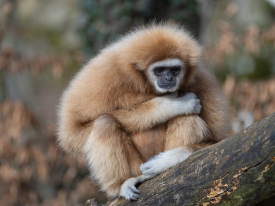Gibbons are small, arboreal apes known for their remarkable agility and the distinctive songs they use to communicate within their territories. They are part of the family Hylobatidae, which differentiates them from great apes (Hominidae) and monkeys (Cercopithecoidea). Native to the forests of Southeast Asia, gibbons are highly adapted to a life in the treetops, exhibiting long arms for brachiation (arm swinging) and a smaller size compared to their great ape cousins.
Classification of the Gibbons
Kingdom: Animalia
Phylum: Chordata
Class: Mammalia
Order: Primates
Family: Hylobatidae
The family Hylobatidae is further divided into four genera, each containing several species:
1. Hylobates (including the agile gibbon, H. agilis, and others)
2. Hoolock (including the western hoolock gibbon, H. hoolock, and others)
3. Symphalangus (solely the siamang, S. syndactylus)
4. Nomascus (including the northern white-cheeked gibbon, N. leucogenys, and others)
These genera encompass a variety of species, each with its own specific habitat and characteristics. Despite their differences, all gibbons share common traits such as monogamy, territoriality, and a primarily frugivorous diet, although they may also consume leaves and insects. Gibbons are known for their conservation status being threatened across all species due to habitat destruction, poaching, and the illegal pet trade.







